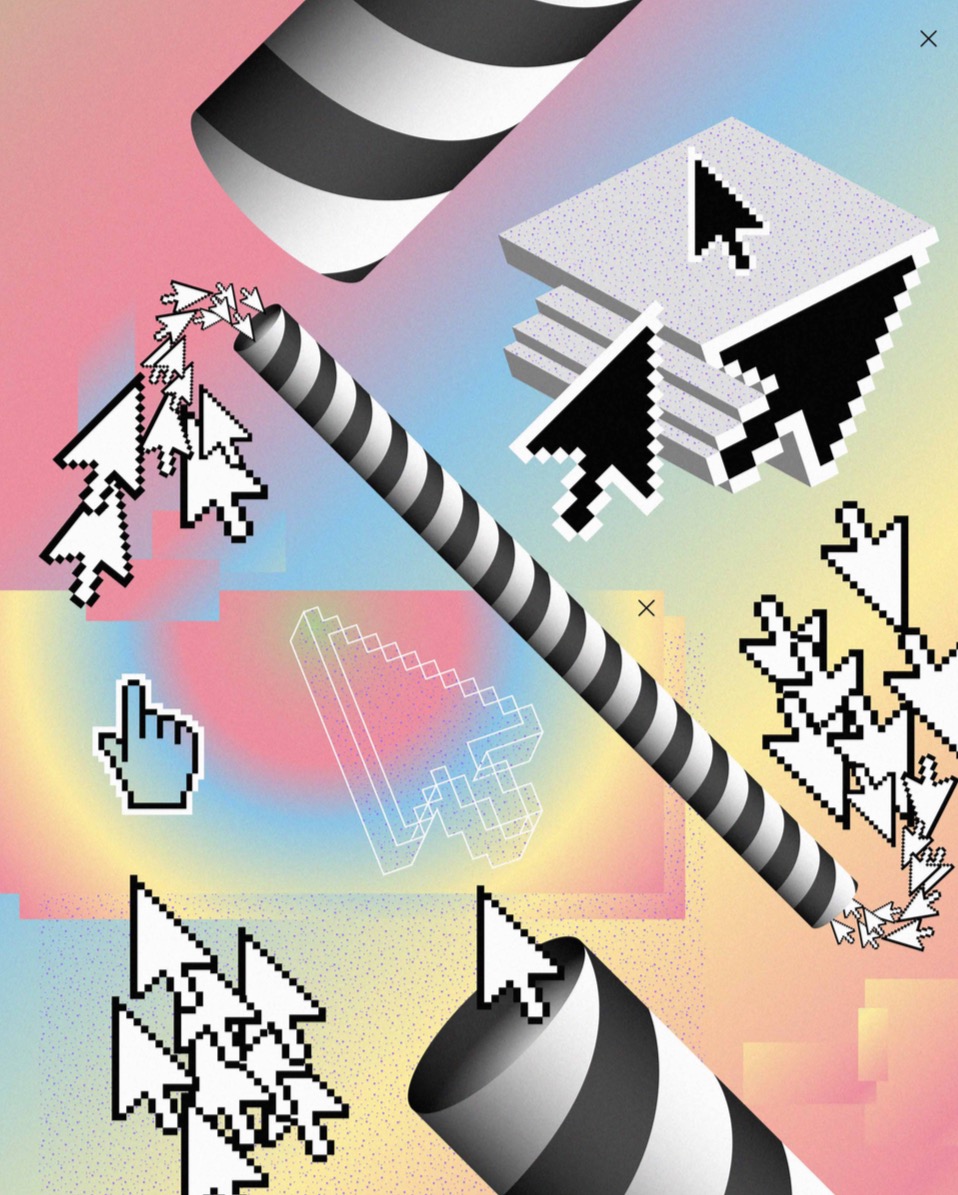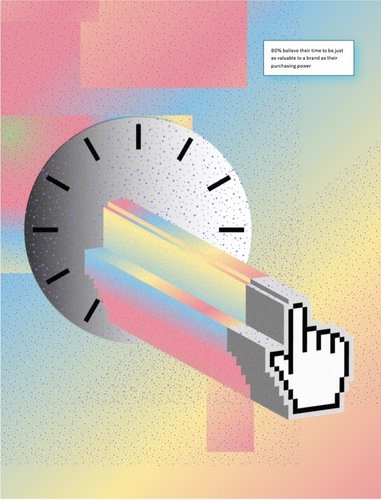Pay Attention
The metrics for success in online publishing have changed. What are the implications for advertisers and publishers when performance is measured, not by clicks, but by attention?

In 1994, a former direct mail marketer, Ken McCarthy of the Internet Gazette, organised Silicon Valley’s first seminars on internet marketing. These conferences were essential to the internet’s success as they were responsible for some of the first initiatives to bridge the then separate worlds of the multimedia industry and the nascent internet phenomenon.
The premise was simple. The internet, like any other information medium, could become a platform for content, an outlet for marketing, and a source of revenue. McCarthy covered subjects that are pervasive today, but were then unheard of, such as applying direct marketing principles to e-mail, monetising off banner advertisements, and, perhaps, most importantly for the internet of today, implementing the clickthrough rate as a metric of content engagement an ad performance.
It’s important to consider that the multimedia industry has always been competitive, and it’s always been such that content creators were responsible for writing attention- grabbing headlines, (see: sensationalism). The difference, however, lies in the end goals that determine a media company’s viability. The print publication model requires that direct newspaper or magazine sales serve as the main key performance indicators (KPI). As a result, a skilled writer was one who was able to write catchy headlines and deliver meaningful content that would bring readers back to the kiosk to purchase another issue.
On the internet, however, the proliferation of content and content creators has made it much more difficult to follow the direct sales model of print publication. Instead, most media companies have moved toward funding operations solely based on ad sales. To survive within this business model, media companies have to demonstrate to advertisers that their ad space is valuable by demonstrating high traffic volume (clicks incoming), and advertisers have to demonstrate to brands that their ad placements on those spaces are engaging (clicks outgoing). This is the dominant force that drives the Click Web.
Preferred Medium of Online Content
Of our participants in the Currency Survey, only 3% stated that listicles were their preferred medium of online content, 14% preferred long form articles, 19% preferred videos, and 31% preferred short articles
Key Takeouts
- Cut out the noise and ensure that content is curated and personalised
- Let KPIs be responsive to the medium. E.g. more time spent on long form articles, more views on videos
- Never aim for viral, always aim for quality. The best content will spread organically
Less is More
This business model has evolved in many cases to encourage instantly gratifying, but arguably mediocre content. As a result, the Click Web continues to foster entities and formats that clutter the internet to facilitate click-generating binges that exploit short attention spans. In turn, people are becoming more and more stressed out by information overload. In Protein’s Currency Survey, 80% of participants believed that their time is now just as valuable to a brand as their purchasing power. As the digital universe expands, the time it takes to filter through the information starts to eat into the time it takes to actually digest the information.
In 2007, a research study conducted by Jakob Nielsen of the Nielsen Norman Group tracked participants’ eye movements on a web page while conducting a certain task. The heat maps revealed three levels of user engagement: quick scanning, partial reading, and thorough reading. But throughout all levels, the study found that the participants’ eyes had almost no fixation on banner advertisements. Another survey study conducted by Adotas in 2013 showed that only 14% recalled the last display ads they saw and the company and product that were promoted. With the way that Internet content has matured in the Click Web, there’s little time to offer advertisements resulting in widespread banner blindness.
Media figures have anticipated the growing tension between content creators and content consumers, one side seeking to “game” the click in order to stay afloat in an overcrowded market, and the other dodging ads and clickbait. Between 2014 and 2015 alone, there was a 41% increase in people using ad blockers, according to a study conducted by Adobe and PageFair.
To support the enhanced awareness of this media saturated generation, in his 2012 book, The Information Diet, Clay A. Johnson makes the case that information diets, or the content that one consumes on a daily basis, must be cared for like nutritional diets. When it comes to engagement and information retained, it’s hard to argue that click bait content would leave the same satisfaction as quality journalism does. Of our participants in the Currency Survey, only 3% stated that listicles were their preferred medium of online content, 14% preferred long form articles, 19% preferred videos, and 31% preferred short articles.
Without condemning certain content, there is a case to be made that honouring the click as primary KPI favours a tendency towards less intellectually rich content. However, as big data develops, publishers and brands have access to more information than ever about the types of content that their consumers want and remember. In terms of brand awareness, product education, and informational messaging, what KPIs top this sort of genuine attention?
New Data = New Currencies
“In the seeds of the Attention Web we might finally have found a sustainable business model for quality on the web” writes CEO of Chartbeat, Tony Haile in his 2014 article for TIME Magazine, ‘What You Think You Know About the Web Is Wrong’. While the Attention Web is not a completely new concept, it has taken over a decade for the idea to catch on, and is still in the early stages of shaping digital media today. One of the pioneers leading this movement, Chartbeat, offers services for publishers that measure who’s on a particular page at a given moment and what they’re doing.
In 2015, ChartBeat added two of their most advanced products yet. Engaged Headline Testing evaluates not only how many clicks a headline generates, but how the time spent after the click stands up to those numbers, allowing publishers to determine which headlines promised more than they could deliver, or which headlines were too modest in their approach.
Engaged Ad Refresh allows publishers to offer advertisers a way to ensure the “viewability” of their ads. First introduced by Google in 2012 and officially accredited by the Media Rating Council in 2013, the “viewability” of ads refers to ads that have at least 50% of their pixels on the screen for at least one second equaling one Active View.

Building upon this concept, Engaged Ad Refresh tracks when an ad has run for at least thirty seconds, before running another ad, similar to the format of a commercial break. The advantage of this is an algorithm that places ads that are underperforming in Active Views into articles that have longer engagement times in order to reach campaign goals. Ultimately, these tools allow publishers to maximise their ad inventories by creating content that engages viewers for longer.
Even adtech companies like Integral Ad Science, (IAS), are catching on to using data science methods to rate the quality of ad spaces being purchased. Analysing beyond traffic volume, IAS’s TRAQ Score (TRue Advertising Quality) takes into account the quality of written content, the incoming and outgoing links, the types of image content, risqué content categories, (adult, alcohol, hate speech, etc.), the legality of websites, among other criteria to evaluate media inventories that are right for brands and reach the right audiences. More targeted ads means less irrelevant messaging and a slimmer Internet.
It’s important to keep in mind that many publisher tools and adtech services still and always will incorporate the click in their performance metrics. As of now, the click is here to stay. After all, it is a necessary step to navigate through web and digital. However, what these new metrics have offered are new formulas for evaluating currency on the internet that may lead to a less cluttered and healthier web.
Digital Newsstands
Alternatively, some entrepreneurs are still hoping to bring back methods that support media companies through direct payment methods. While the concept of paywalls has existed since the late ‘90s, few media companies have actually been able to employ them sustainably, aside from some giants such as The Wall Street Journal, The New York Times, Financial Times, or Time Magazine. The standard paywall models are either hard paywalls that require paid subscription for any content access or soft paywalls that start charging for any content after a set limit.
Part of the difficulty, however, of bringing the physical newsstand model to an online medium is the issue of pricing how much an article is worth, how to prevent circumvention of payment, and how to price articles in an age when readers want content from diverse sources.
Blendl is a content platform that acts as an online newsstand, providing a sort of “iTunes for Journalism.” Founded in 2014 and based out of the Netherlands, Blendle aims to solve many of the frustrations with current payroll models such as nagging registration requests, cumbersome payment methods, and the limited titles that come with subscriptions. To guarantee a desirable experience, Blendle even offers readers a refund if the content costs too much, the article was too long or short, or if it didn’t deliver what the headlines promised.
By creating a one-stop shop and implementing a one-click payment method, Blendle offers a sort of digital newsstand for both content creators and consumers to support content worth paying for. The company is growing rapidly and has already signed on media companies such as The New York Times and The Washington Post.
No More Gimmicks
Since Ken McCarthy’s first seminars bridging the multimedia industry and Silicon Valley’s tech entrepreneurs, the internet has changed dramatically. Since then, we’ve ushered in a new age of how content, from music and film to journalism and advertisements, is distributed, consumed, and monetised.
Along the way, many archaic monetisation models dissolved and companies that couldn’t adapt to the media landscape fell between the cracks. Even now, new forms of currency, media valuation methods, and data science tools are reshaping content.
Keep in mind that the first ever banner advertisement was for AT&T and was hosted on Wired, then known as HotWired. The banner read, “Have You Ever Clicked Here? You Will.” And that was the exact problem—relying on a gimmicky novelty of the medium and on the click.
As the internet matures, companies are developing novel platforms that incentivise a cleaner user experience and better content. With higher transparency comes higher standards for content, and the media companies that will survive are the ones that will provide a meaningful experience for their audience.


